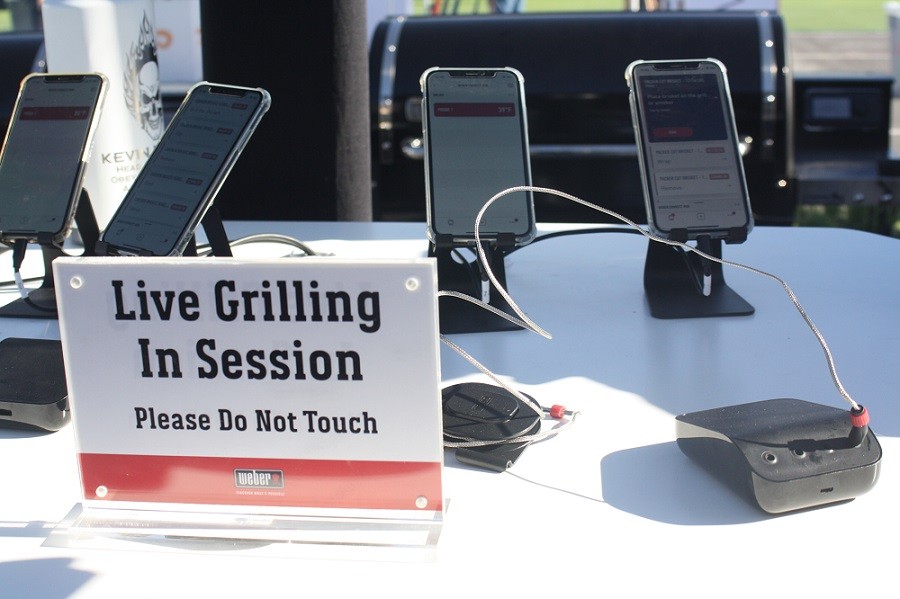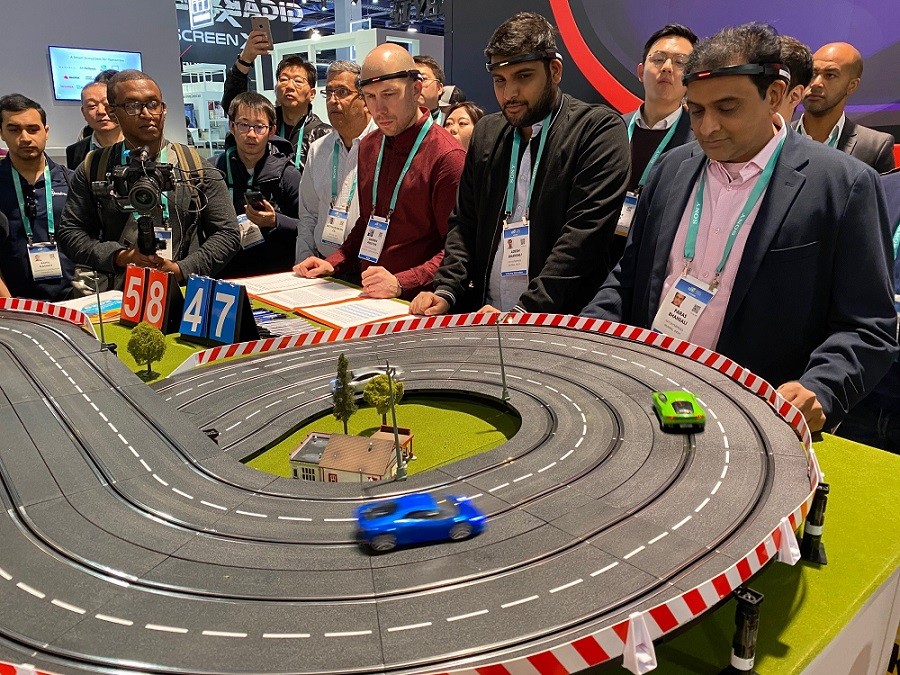By Josh Seidemann, VP of Policy, NTCA-The Rural Broadband Association
(Las Vegas) Technology spoke to me today. Not in grandiose visions of “meaningful” and “advancement,” but in simpler terms of “you won’t burn the steaks again” and “maybe you’ll leave the course with the same number of golf balls with which you started.” Today I learned about Weber Connect, a new device to help backyard gourmets, and Tuggagolf, which is getting ready to sell Bluetooth-enabled golf balls. By the way, I also drove a slot-car racer with my brain (I notched third place, which was dead-last).
Over the past several days, we have talked about health care aids and the need to balance privacy and data security with technological developments that rely increasingly on larger and more detailed data sets. So, while I also tested a facial detection system that could reveal my heart rate and stress level, I also saw some lighter examples of technology.
Weber Connect utilizes a set of probes that monitor the internal temperature of cooking food and the ambient temperature of a gas or charcoal grill. Combined with an app, it alerts users to season, flip or remove food. One person commented that it will “take the fun” out of grilling, if “fun” is defined as constant monitoring and (with a charcoal grill) wondering when it is time to add more briquets. But, for the rest of us, it should improve greatly our chances of mastering the art of BBQ and reduce as greatly opportunities to inadvertently ruin what could have been an outstanding culinary achievement.
Tuggagolf offers less promise to me – I simply do not golf very often. And, the Bluetooth-enabled ball-finding capabilities are distance-limited, so long shots into the rough (or water hazards) will probably still be unrecoverable. However, for golfers who can actually hit the ball but may still need some help finding it when they are within Bluetooth range, the Andorra-based company offers a useful product. (If you are not familiar with Andorra – neither was I. It is the sixth-smallest country in Europe covering about 181 square miles with a population of about 77,000.)
Binah, however, made me stop and think. The platform reveals a subject’s heart rate, heart rate variability, oxygen saturation, respiration and mental stress - all without touching the user. It reads biometric information from the subject’s cheeks and can be used in real-time or with pre-recorded video. It offers uses in medicine, public security and insurance; the company proposed that visual data could be incorporated in cars to activate preemptive safety measures if a driver showed signs of inability.
And BrainCo . . . a headband that measures brainwave activity. The neurofeedback is intended to help train users to improve mental focus. On display today was a slot-car racetrack whose competitors wore BrainCo headbands that were linked to the cars. Greater brainwave activity would trigger higher speeds on the user’s respective vehicle. Users were encouraged to think hard about anything, including scientific reports that were made available at the booth. I thought really hard about a lot of things, and my car cruised cleanly around the track. Unfortunately, the guys next to me apparently thought harder, since they passed me on a consistent basis. But the technology is not all fun and games – BrainCo is developing advanced prosthetics that will respond to neural impulses.
And, for today, perhaps that is the conclusion: app-based and biometric-powered technology is infiltrating more and more aspects of daily life, whether for leisure and recreation or medicine and public safety. Stay tuned for a CES wrap-up.



